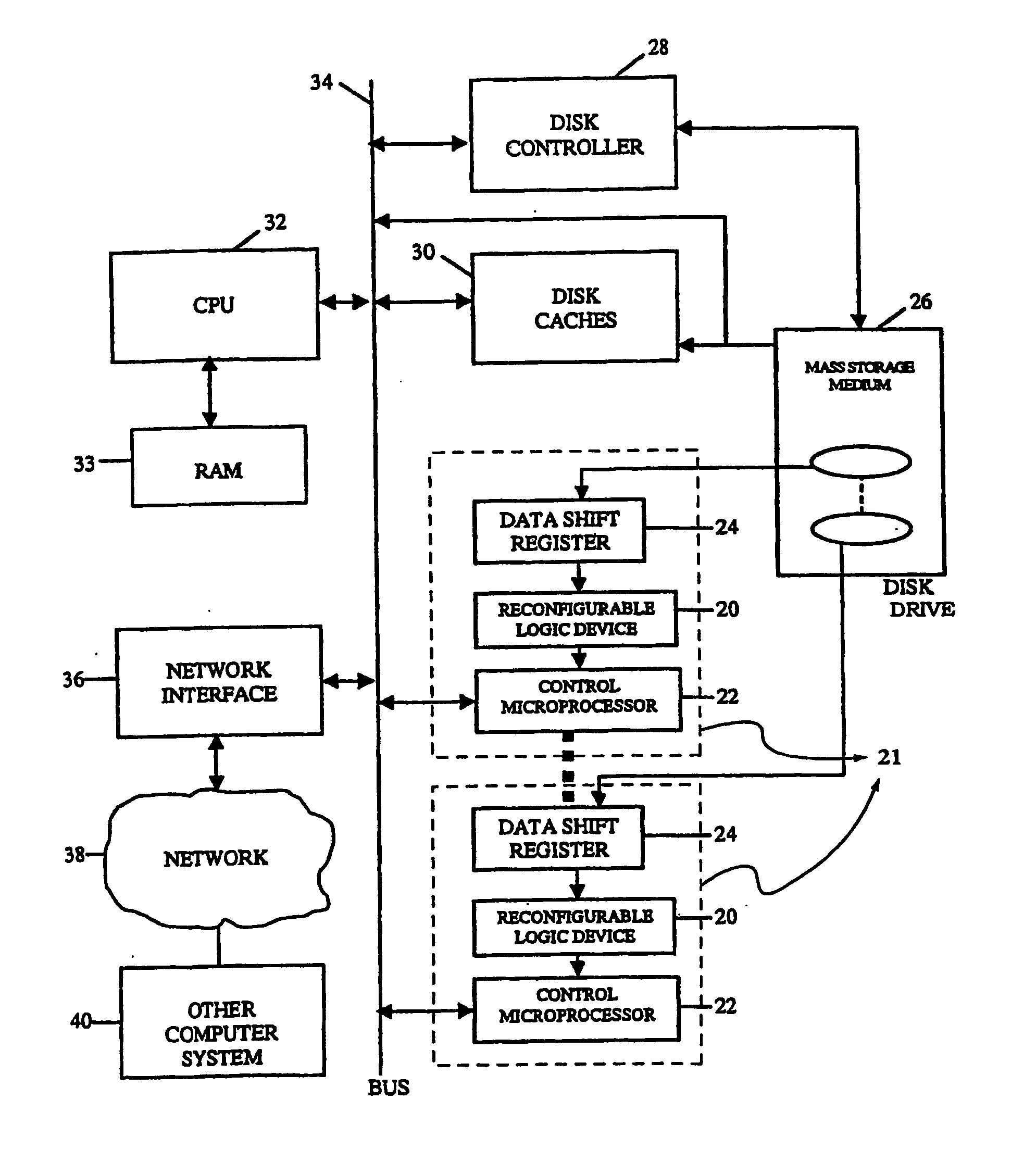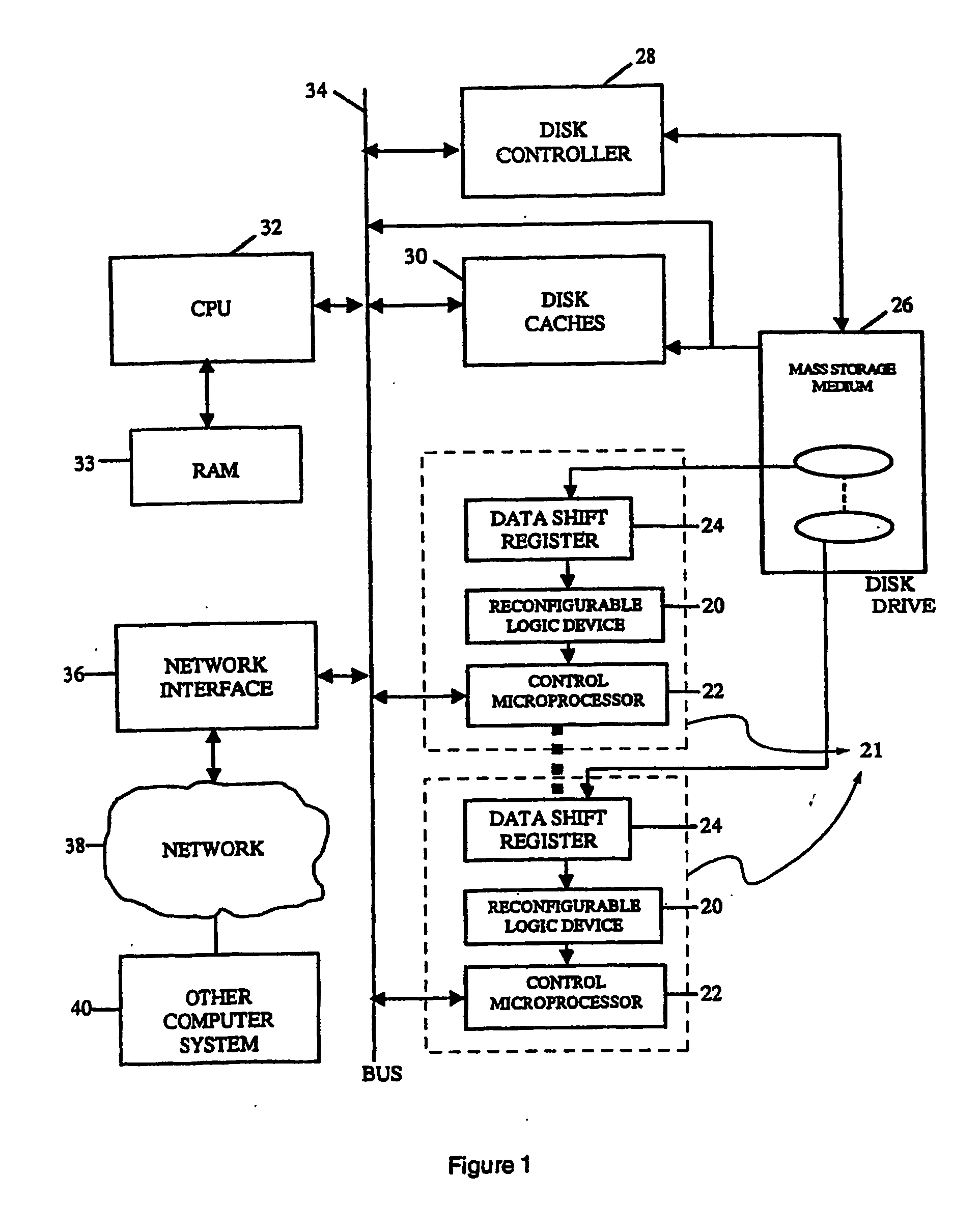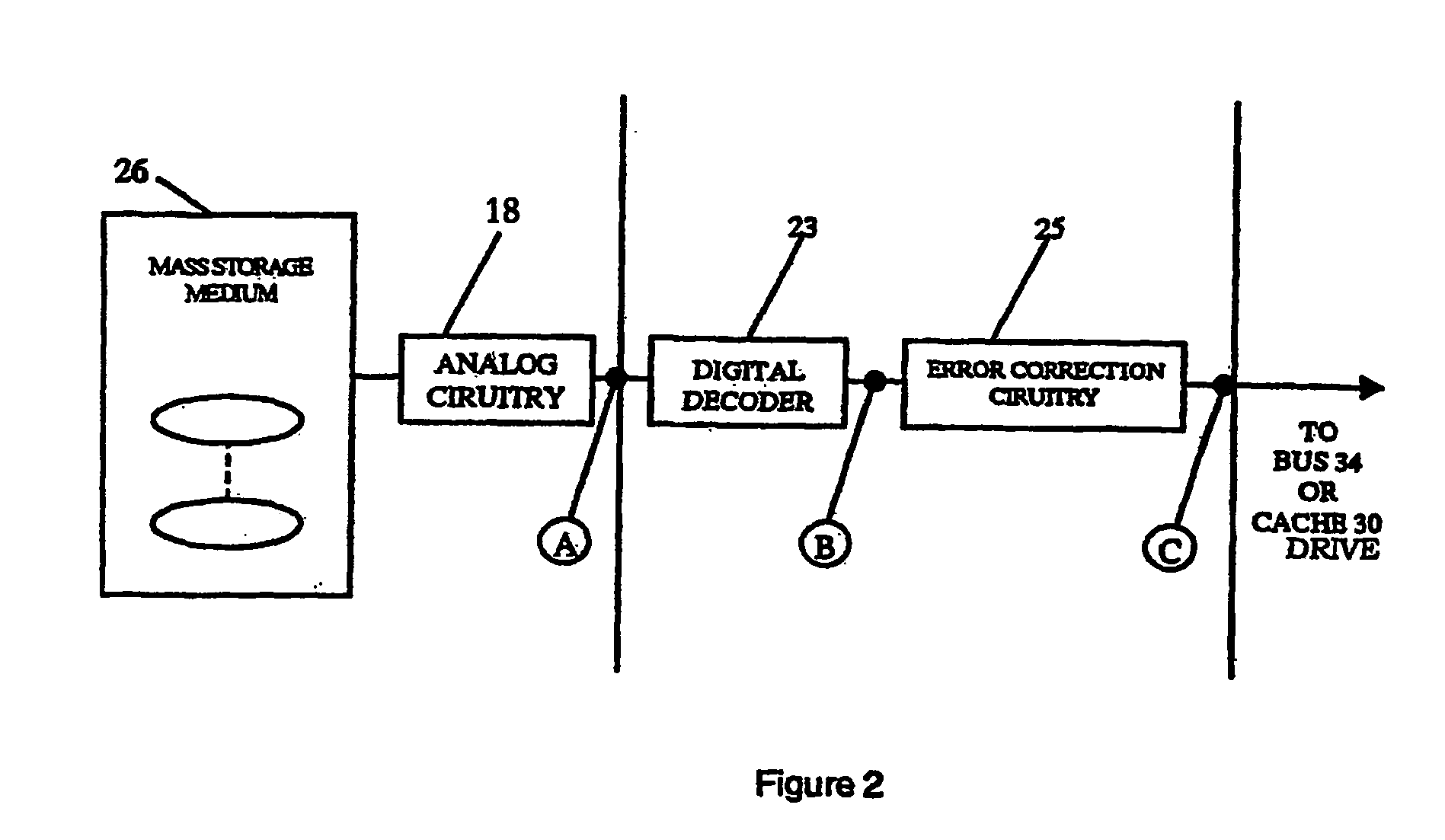Intelligent data storage and processing using fpga devices
a data storage and intelligent technology, applied in the field of intelligent data storage and processing using fpga devices, can solve the problems of inability to design a search which will yield a manageable result, inability to meet the needs of users, etc., to achieve enhanced data security, high speed, and high accuracy
- Summary
- Abstract
- Description
- Claims
- Application Information
AI Technical Summary
Benefits of technology
Problems solved by technology
Method used
Image
Examples
Embodiment Construction
[0071] As shown in FIG. 1, the present invention is readily implemented in a stand-alone computer or computer system. In broad terms, the invention is comprised of at least one re-configurable logic device 21 coupled to at least one magnetic mass storage medium 26, with that re-configurable logic device being an FPGA. As depicted in FIG. 1, the re-configurable logic device 21 may itself include a plurality of functional logic elements including a data shift register and possibly a microprocessor, or they could be on separate chips, or the individual logic elements could be configured in a pipeline or parallel orientation as shown in some of the other figures herein. In any event, re-configurable logic refers to any logic technology whose form and function can be significantly altered (i.e., reconfigured) in the field post-manufacture. Examples of re-configurable logic devices include without limitation programmable logic devices (PLDs). A PLD is an umbrella term for a variety of chi...
PUM
 Login to View More
Login to View More Abstract
Description
Claims
Application Information
 Login to View More
Login to View More - R&D
- Intellectual Property
- Life Sciences
- Materials
- Tech Scout
- Unparalleled Data Quality
- Higher Quality Content
- 60% Fewer Hallucinations
Browse by: Latest US Patents, China's latest patents, Technical Efficacy Thesaurus, Application Domain, Technology Topic, Popular Technical Reports.
© 2025 PatSnap. All rights reserved.Legal|Privacy policy|Modern Slavery Act Transparency Statement|Sitemap|About US| Contact US: help@patsnap.com



